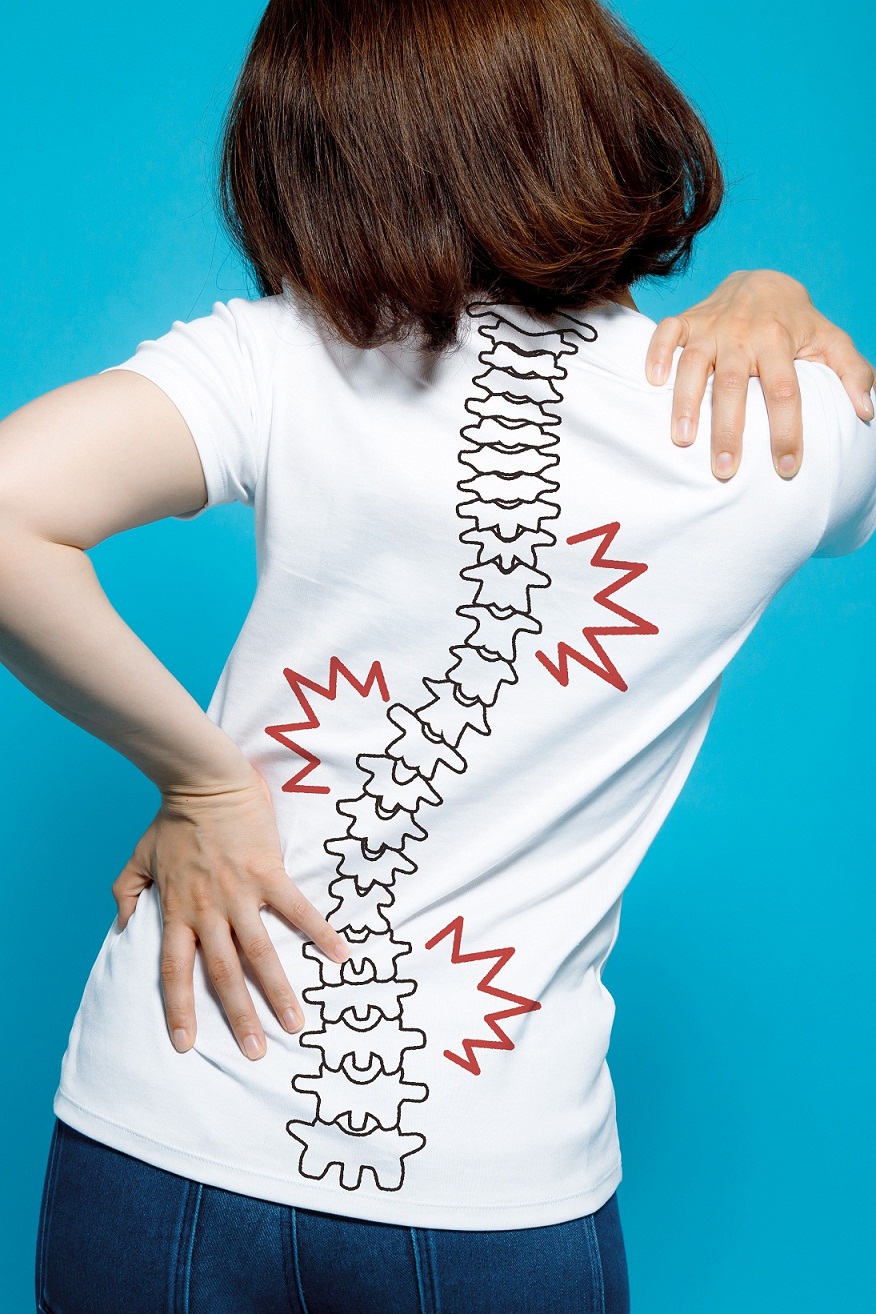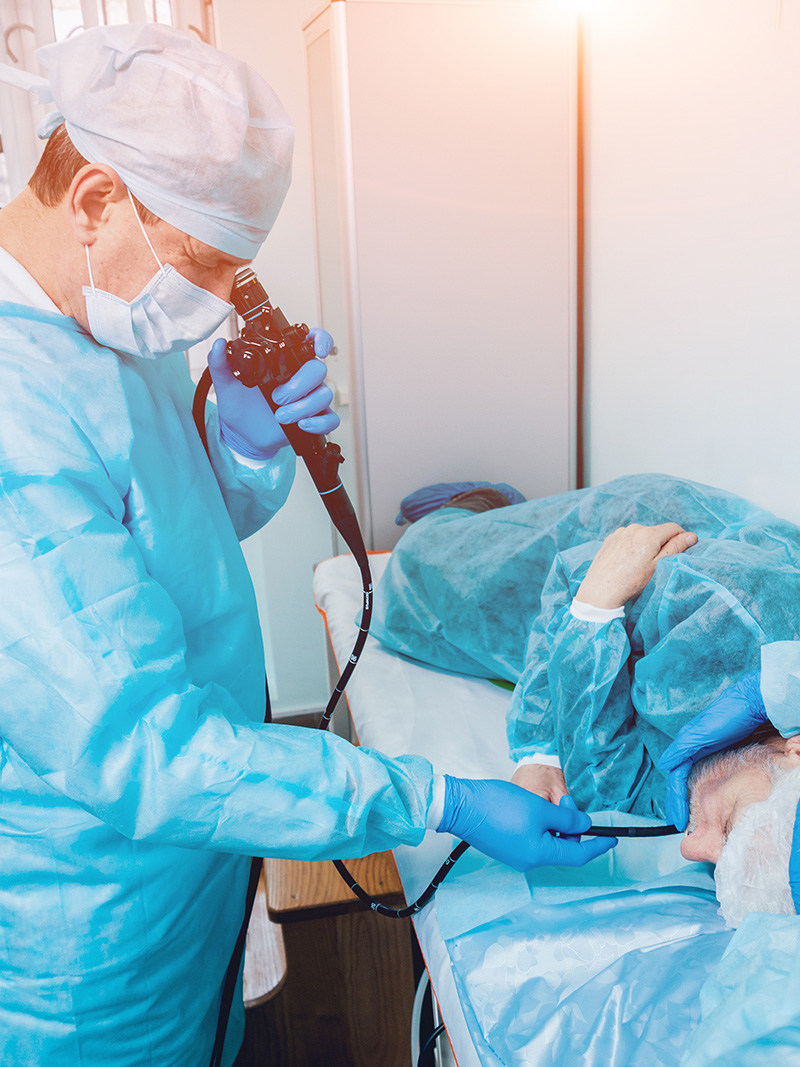

An issue concerning one among the rubbery cushions (discs) that lie in the spaces among the vertebrae that make up the spine is referred to as a herniated disc.
A spinal disc has a harder, rubbery shell covering a soft, jelly-like interior (nucleus) (annulus). A herniated disc, also known as a slipped disc or a ruptured disc, happens when a portion of the nucleus slips through a rip in the annulus.
Although a herniated disc can develop anywhere along the spine, it most frequently does so in the lower spine. A herniated disc may cause discomfort, numbness, or paralysis in an arm or leg, depending on the location located.
A herniated disc, also known as a bulged, slid, or ruptured disc, occurs when a portion of the disc nucleus pushes via a tear or fracture in the annulus and into the spinal canal. Usually, herniated discs are in the initial stages of deterioration. The neural pathway and the dislocated herniated disc fragment cannot fit in the spinal canal because of its small size. The disc compresses against the spinal nerves as a result of this displacement, frequently causing pain that may be very intense.
Any section of the spine might experience a herniated disc. Herniated discs can develop in the neck as well as the back muscles (lumbar spine) (cervical spine). Depending on whatever portion of the spine is impacted, different areas of the body may experience discomfort.
The compressed nerves caused by the herniated disc might put pressure on them and result in pain. A person might not always exhibit any symptoms. The following are examples of common symptoms:
When a herniated disc pushes upon that spinal cord or even the nerves which emerge from the spinal cord, tingling or sensations may result. The odd feelings may radiate along the nerve and into the legs or the arms.
When a herniated disc presses against a nerve, the muscles that are linked to the nerve may deteriorate. It could be challenging to walk because of this.
This typically starts in the spine and can spread to the legs or the arms. Sometimes, the sensation is described as scorching or sharp.
The placement of the issue might also affect how a herniated disc manifests its symptoms.
In any part of the back, a badly herniated disc may result in issues with bladder or bowel control. Back pain and unexpected changes in bladder and bowel function are typically indicators that immediate medical attention is required.
The buttocks, thighs, and calves are frequently affected by lower back herniated disc pain. Sciatica is the medical term for pain that radiates from the buttocks down the legs along the course of the sciatic nerve.
Shoulders and arms are more prone to experience pain if the neck issue is present. Additionally, stiffness, weakness, and numbness inside the legs might be brought on by a significant herniation in the neck area.
The area surrounding a herniated disc in the mid back is probably going to hurt. At the front of the body, discomfort may radiate around the ribs. The most frequent type of disc herniation occurs in this verified origin location.
A herniated disc might have many different reasons, but they all come to the same thing. the cushion between the vertebrae in the spine pulls out, bulges, or even ruptures. This very small disc begins to occupy more space than it ought to, and as you are surely aware, it can be extremely painful.
Here are the basic causes of Herniated disc:
The regular wearing and strain on the spine that causes a herniated disc is common. Another name for this is degeneration. Our backs support and distribute human weight, and the intervertebral discs in the spine are designed to cushion movement impact.
Our discs put in a lot of effort to help people move so well, so over time they might get worn out. The nucleus puplosus, the jelly-like inner layer, can press through the annulus fibrous, the strong outermost part of the disc, causing a swelling or herniated disc.
Injuries can potentially result in a herniated disc. For instance, a vehicle accident can herniate a disc because the rapid, jerking action can place too much stress on the disc and result in a herniation. Alternatively, lifting a large load incorrectly or twisting violently can herniate a disc.
If you undergo a traumatic event, it's possible that a spinal disc has weakened due to wear and strain (degeneration), which makes it more likely to herniate. Another possibility is that the disc has compromised to the point that even a seemingly untraumatic occurrence can result in a herniated disc.
This is the scenario when someone sneezes and herniates a disc. The abrupt power of sneezing can herniate a spine if you already possess a weak disc, even though it may not seem like a dramatic event that could cause harm.
A herniated disc is typically caused by chronic deterioration and overuse by repetitive motion over time. Age-related spinal disc weakness and dryness increase the likelihood of a herniated disc. Also, Spinal stenosis or connective tissue abnormalities are two medical problems that can raise the risk of disc herniation.
There are three main types of herniated discs, and the one causing your back discomfort will depend on how severe the herniation is.
Here are the basic 3 Types of Herniated Disc
Bulging discs are a common term for contained herniations. They are brought on by pressure between the vertebrae, which pushes the discs outward. These herniations can occur and cause back pain, but they can also go unnoticed. The vertebrae compressing the discs, which puts pressure on the adjacent nerves, is what causes the mild back pain that is typically associated with confined herniations.
A disc extrusion is a common name for a non-contained herniation. Usually, these herniations result in severe back discomfort. Because they exert so much stress on the nearby nerves, they can be linked to tingling or burning in the limbs.
In general, sequestered herniations can result from non-contained herniations that are ignored or left untreated. The discs break when the vertebrae squeeze them with such force. For the sufferer, this may result in excruciating discomfort and frequently a loss of movement. Be careful to see your doctor right away if you have noticed any of these symptoms.
Many people from Arabic countries like Iraq, Bahrain, Oman, and Saudi Arabia travel to India seeking the best treatment at minimum cost. As the cost of Herniated Disc Surgery in India is cheaper than in the rest of the world, it is a boon for international patients to receive premium medical care at cost-effective prices. For Herniated Discs, treatments like Fenestration, Laminotomy, Microlumbar Discectomy, and Endoscopic Surgery are available in India. Indian surgeons are globally trained and have gained years of experience. The cost of Herniated Disc Surgery in India is mentioned below.
| Treatment | Cost |
|---|---|
| Herniated Disc Surgery in India | 4000-4500 USD |
The majority of the time, your herniated disc troubles should start to get better on their own within several weeks, but occasionally, for severe cases, you could require more care. that may involve appropriate medication, surgery, therapy, injections, and other treatments.
Here are the treatment options available for Herniated disc:
One vertebra may move forward or backward over vertebrae below it, a condition is known as spondylolisthesis. Spondylolisthesis can be classified into six main categories: traumatic, congenital, iatrogenic, pathologic, degenerative, and isthmic. All sections of the spine (cervical, thoracic, and lumbar) can have this kind of structural anomaly, although the lumbar spine is where it most usually manifests itself.
Dysplastic spondylolisthesis also referred to as congenital spondylolisthesis, is an anomaly that exists from birth. The facet joints that connect the spinal vertebrae have a deficiency that causes the slip in this form of spondylolisthesis. The L5 vertebrae gradually slip over time as a result of this, which might happen in the inferior joint at L5 in the lower joints, the superior joint at S1 in the upper joints, or both joints. In comparison to other forms, this spondylolisthesis is uncommon.
The most typical kind of spondylolisthesis, known as isthmic spondylolisthesis, has three distinct subtypes but one common spinal abnormality among them all. The bone that joins the lower and upper facet joints, the pars interarticularis, has a deficiency in isthmic spondylolisthesis, generally a fracture. Due to the fracture, the damaged vertebra is unable to maintain its alignment with the remaining vertebra, which causes it to slip forward.
Arthritis in the spine causes a slip known as degenerative spondylolisthesis. Aging people frequently get arthritis or degenerative changes. Once the spine's bones start to degenerate, they struggle to maintain the spine's alignment, and a vertebra slides forward as a result. Although it can arise in the cervical spine as well, the lumbar vertebra slip might happens most frequently.
Traumatic spondylolisthesis is a slide that occurs as a result of something that puts a lot of force on the spine. The neural arch, the bony ring that protects the spinal cord, is harmed as a result of this strong strain. The vertebrae slide forward as a result of the neural arch's fracture. Although it is not frequent, the lumbar and cervical spines may be impacted in this type.
Pathologic spondylolisthesis is a bone slip caused by conditions like tumors, malignancies, and bone diseases. The neuronal arc, which protects the spinal cord, and other posterior (backside) vertebral structures are destroyed as a result of this weakening. Pathologic spondylolisthesis is an uncommon kind, same as traumatic spondylolisthesis.
Iatrogenic spondylolisthesis is indeed a slippage immediately resulting from a prior spine operation that entailed displacement of the spine lacking stability. When performing a decompression treatment, a little portion of bone is removed to relieve compression on the spinal cord and the branching nerves. This surgery runs the risk of the vertebral body slipping if too much bone is removed. Usually, when a significant amount of bone must be removed, this is prevented by using a stabilizing procedure.
There are lots of treatment procedures available for Spondylolisthesis.
If this treatment procedure doesn't provide relief, then an operation might be needed as per the physician's opinion.
The most common cause of cervical vertebrae is age, which causes the spinal canal to constrict and compress the spinal cord. The spinal discs that divide and support the vertebrae may deteriorate and herniate. The gap between both the vertebrae narrows as a consequence, and the discs stop serving as shock absorbers. The spine's bones as well as ligaments also grow and lose some of their flexibility at the same time. The spinal canal narrows as a result of these modifications.
Lumbar spondylosis is frequently treatable non-surgically. Painkillers, muscle relaxants, anti-inflammatory drugs, and steroid injections are among the available medical treatments. In order to reduce discomfort, physical treatment, as well as hot- and cold therapy, are beneficial.
Treatment for spinal cord-related conditions frequently involves modifying one's lifestyle, which includes regular low-impact activity and decreasing weight to relieve lower back pressure. When non-invasive effective treatments fail to relieve your backache, the doctor will likely talk to you about surgical options, which in some circumstances may be helpful.


Spinal Fusions, Decompressions and Deformity Corrections
Share Your Reports
Internationally Trained Spine Surgeons
Get an opinion
OAM Navigation, Microscopic and Neuro Monitoring Techniques
Plan Your Surgery